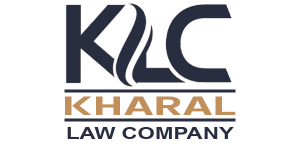As described at the start of this article, a balance sheet is prepared to disclose the financial position of the company at a particular point in time. For example, investors and creditors use it to evaluate the capital structure, liquidity, and solvency position of the business. On tax credit vs tax deduction the basis of such evaluation, they anticipate the future performance of the company in terms of profitability and cash flows and make important economic decisions. The balance sheet (also known as the statement of financial position) is a financial statement that shows the assets, liabilities, and owner’s equity of a business at a particular date. The main purpose of preparing a balance sheet is to disclose the financial position of a business enterprise at a given date. While the balance sheet can be prepared at any time, it is mostly prepared at the end of the accounting period.
Balance Sheets are Static
Our easy online enrollment form is free, and no special documentation is required. All participants must be at least 18 years of age, proficient in English, and committed to learning and engaging with fellow participants throughout the program. If a company or organization is privately held by a single owner, then shareholders’ equity will be relatively straightforward.
Additionally, a company must usually provide a balance sheet to private investors when planning to secure private equity funding. With this information, a company can quickly assess whether it has borrowed a large amount of money, whether the assets are not liquid enough, or whether it has enough current cash to fulfill current demands. Financial strength ratios can provide investors with ideas of how financially stable the company is and whether it finances itself. Financial ratio analysis is the main technique to analyze the information contained within a balance sheet.
- Owners’ equity, also known as shareholders’ equity, typically refers to anything that belongs to the owners of a business after any liabilities are accounted for.
- The balance sheet is essentially a picture a company’s recourses, debts, and ownership on a given day.
- This exercise gives us a rough but useful approximation of a balance sheet amount for the whole year 2024, which is what the income statement number, let’s say net income, represents.
- In the balance sheet, assets having similar characteristics are grouped together.
Learn how they work together with our complete guide to financial statements. The asset section is organized from current to non-current and broken down into two or three subcategories. This structure helps investors and creditors see what assets the company is investing in, being sold, and remain unchanged. Ratios like the current ratio are used to identify how leveraged a company is based on its current resources and current obligations. The balance sheet is a very important financial statement for many reasons.
Create a Free Account and Ask Any Financial Question
Like assets, you need to identify your liabilities which will fed funds rate vs discount rate include both current and long-term liabilities. As you can see, it starts with current assets, then the noncurrent, and the total of both. Noncurrent assets include tangible assets, such as land, buildings, machinery, and equipment. If the company takes $10,000 from its investors, its assets and stockholders’ equity will also increase by that amount.
Account format:
The next section consists of non-current assets, which are described in the table below. A financial professional will offer guidance based on the information provided and offer a no-obligation call to better understand your situation. The articles and research support materials available on this site are educational and are not intended to be investment or tax advice. All such information is provided solely for convenience purposes only and all users thereof should be guided accordingly. 11 Financial is a registered investment adviser located in Lufkin, Texas. 11 Financial may only transact business in those states in which it is registered, or qualifies for an exemption or exclusion from registration requirements.
Equity
It can be looked at on its own and in conjunction with other statements like the income statement and cash flow statement to get a full picture of a company’s health. The financial statement only captures the financial position of a company on a specific day. Looking at a single balance sheet by itself may make it difficult to extract whether a company is performing well. For example, imagine a company reports $1,000,000 of cash on hand at the end of the month. Without context, a comparative point, knowledge of its previous cash balance, and an understanding of industry operating demands, knowing how much cash on hand a company has yields limited value.
Find the best trucking accounting software for your business with our comparison guide. Read about features, pricing, and more to make the best decision for your company. Finally, unless he improves his debt-to-equity ratio, Bill’s brother Garth is the only person who will ever invest in his business. The situation could be improved considerably if Bill reduced his $13,000 owner’s draw.


